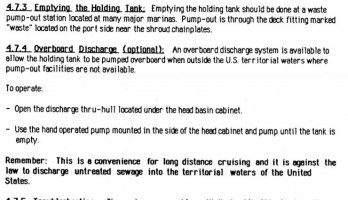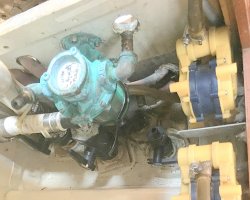Here is what I believe to be Ericson factory connections. Those who wonder why anybody would bother to post this for posterity can harken back to Easter Day, 2020, when the Covid 19 plague closed society and nobody had anything better to do.
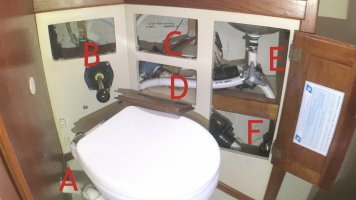
A (photo below): Left hose goes to holding tank. Right intake hose valve selects seawater rinse from through-hull or fresh water rinse from sink drain.
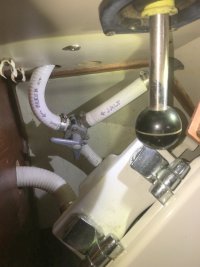
B Whale manual discharge pump. Not connected on this boat, which is fitted with an electrical macerator discharge pump .
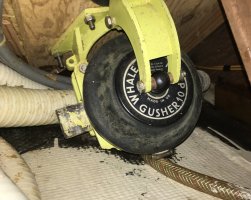
C Selector valve for deck pump-out of holding tank vs. overboard discharge via macerator.
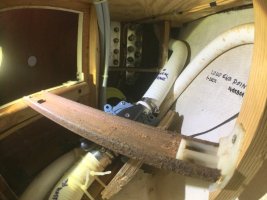
D Another view.
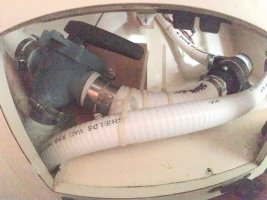
E Macerator pump* (behind "to bowl" on hose) and sink drain valve to permit fresh water flush of toilet. The selector is currently set to overboard sink discharge, meaning the sink drains normally. Turning the valve directs sink water to the head flush intake. (Use of salt or lake water for flushing introduces organisms into the toilet which decay, stain and stink.)
*Discussion of macerator pump is here.
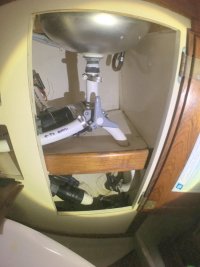
F Through-hull fittings for overboard waste and sink drain.
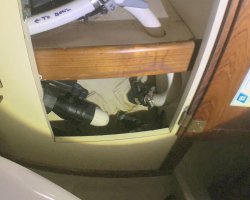
Placard. Guests are unfamiliar with boat heads. This wording works most of the time. The parenthesis was added after a PhD who holds the chair in statistics at Purdue could not figure out how to flush a toilet. I personally set the valves as needed to fresh-water flush or drain-the vanity-sink. If you suggest that guests change the valve setting themselves they get a terrified look in their eyes and say, "I didn't really have to go anyhow." Hmmm. "Toiler paper?" For hard working crew? I'll have to take a pencil and fix that...when the virus goes away.
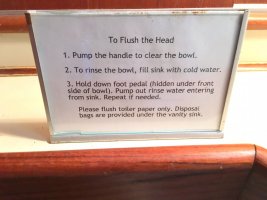

A (photo below): Left hose goes to holding tank. Right intake hose valve selects seawater rinse from through-hull or fresh water rinse from sink drain.

B Whale manual discharge pump. Not connected on this boat, which is fitted with an electrical macerator discharge pump .

C Selector valve for deck pump-out of holding tank vs. overboard discharge via macerator.

D Another view.

E Macerator pump* (behind "to bowl" on hose) and sink drain valve to permit fresh water flush of toilet. The selector is currently set to overboard sink discharge, meaning the sink drains normally. Turning the valve directs sink water to the head flush intake. (Use of salt or lake water for flushing introduces organisms into the toilet which decay, stain and stink.)
*Discussion of macerator pump is here.

F Through-hull fittings for overboard waste and sink drain.

Placard. Guests are unfamiliar with boat heads. This wording works most of the time. The parenthesis was added after a PhD who holds the chair in statistics at Purdue could not figure out how to flush a toilet. I personally set the valves as needed to fresh-water flush or drain-the vanity-sink. If you suggest that guests change the valve setting themselves they get a terrified look in their eyes and say, "I didn't really have to go anyhow." Hmmm. "Toiler paper?" For hard working crew? I'll have to take a pencil and fix that...when the virus goes away.

Last edited:

